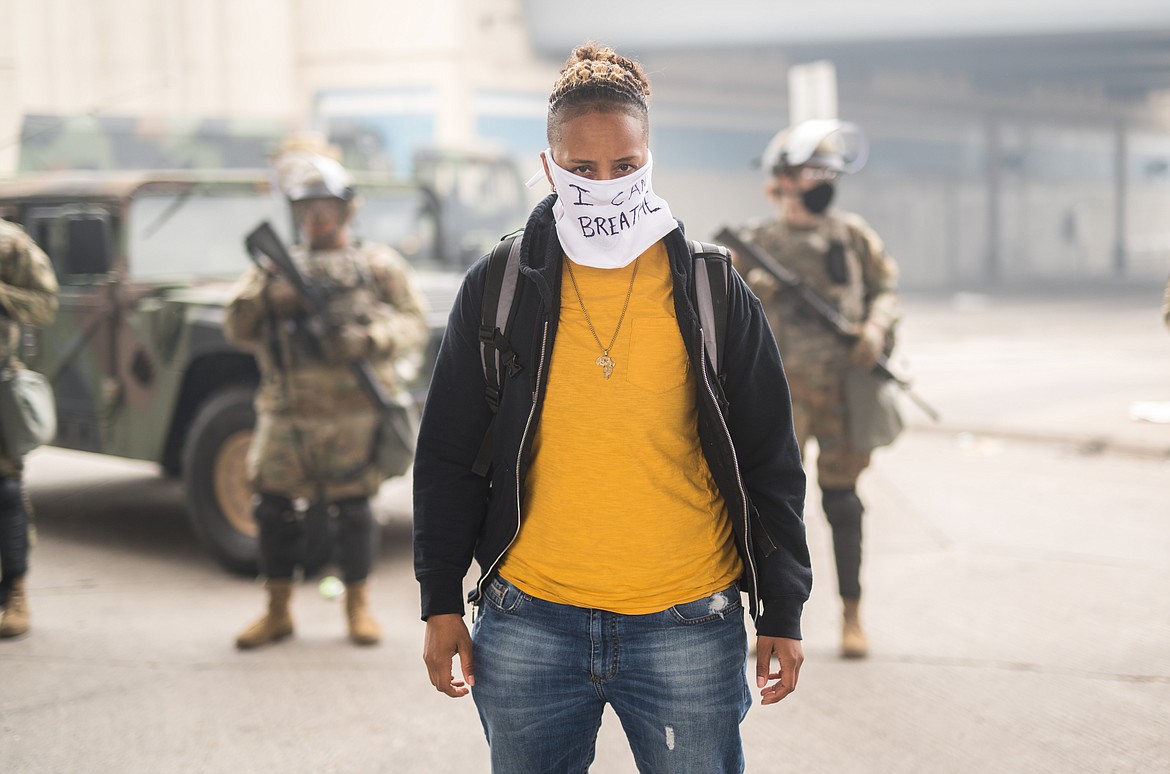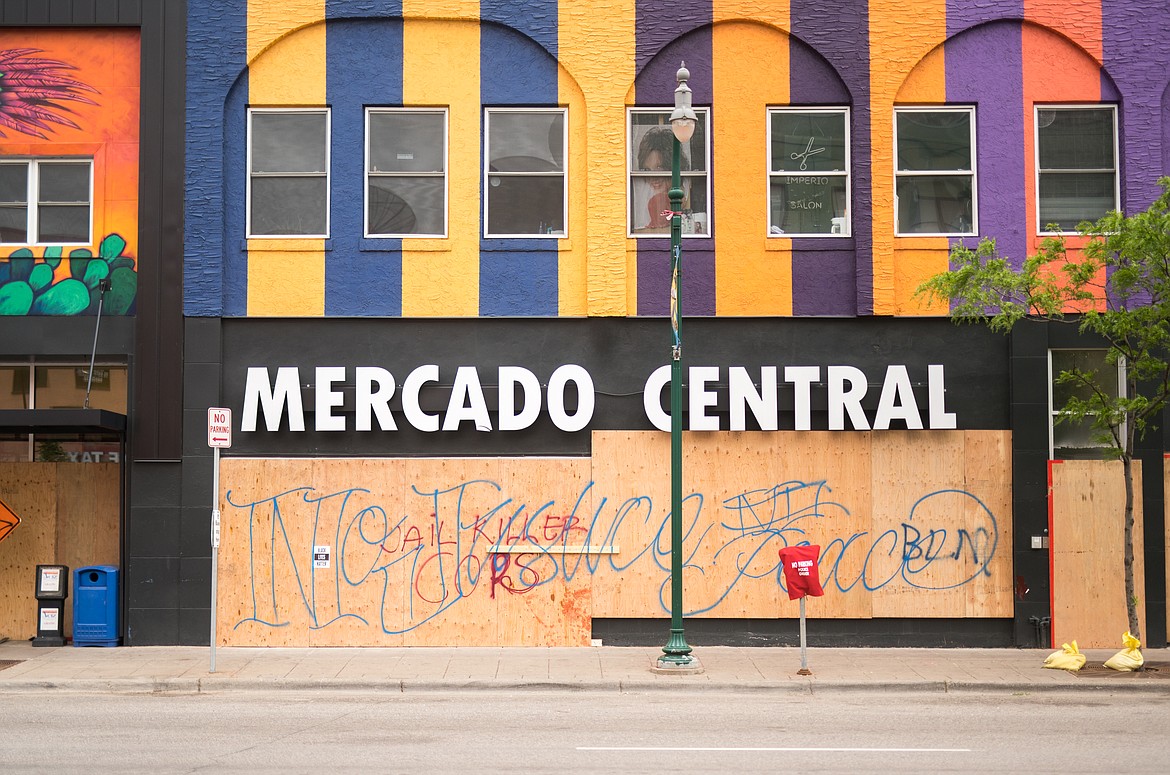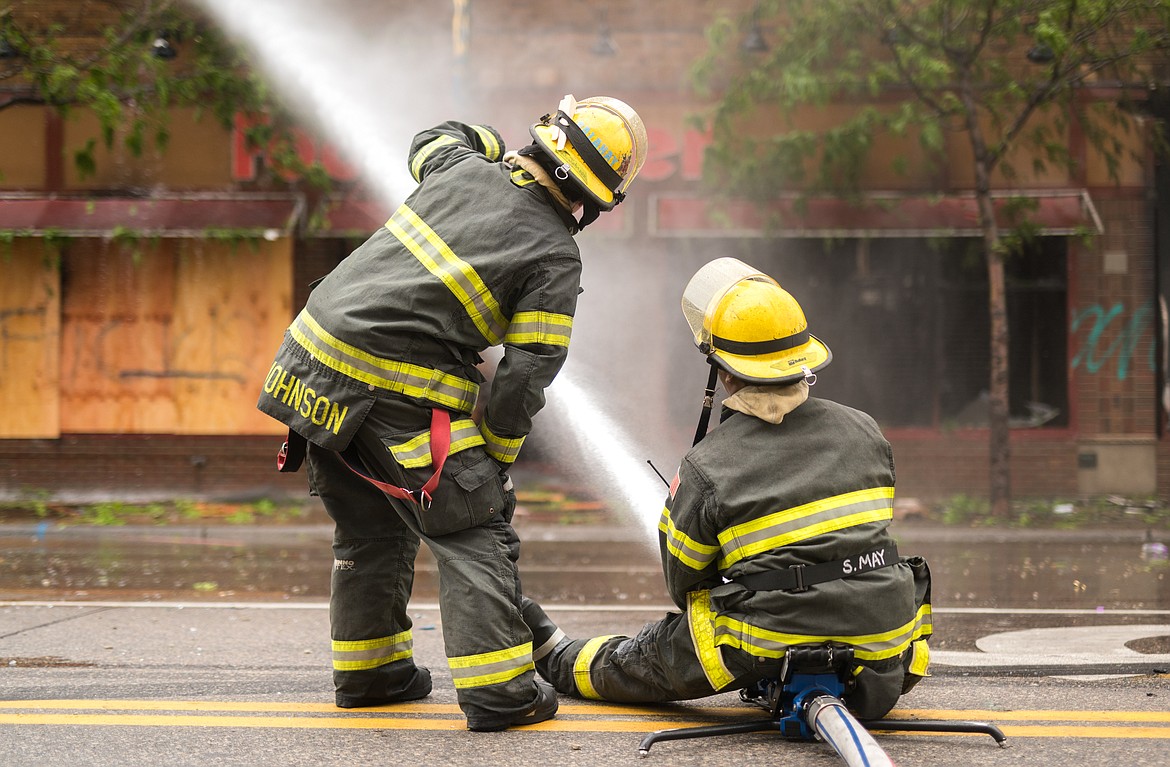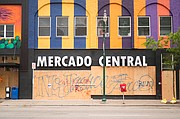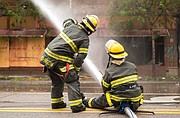CDA photographer documents aftermath of protest epicenter
When Coeur d’Alene photographer Adam Schluter woke up in Minneapolis Friday morning on his way to an assignment shooting a Midwest wedding, he was immediately struck by the smoke and eeriness of the city.
“I didn’t know I was going to wake up in a war zone,” Schluter said.
A pall from the burning buildings in downtown Minneapolis spread low and gray 7 miles to the Mall of America complex, where Schluter had stayed when he flew in the night before.
He had traveled from North Idaho to Minnesota to prepare for an assignment to chronicle a couple’s tranquility and peace, but instead found himself in a place of anger, agitation, chaos and violence.
The bedlam began after George Floyd, an African American, died a week ago while in Minneapolis police custody, resulting in riots in Minneapolis that began Thursday and spread across the nation.
When Schluter learned that the city’s downtown and its Third Street police precinct was burning, and that mobs were looting businesses and destroying vehicles and buildings, he packed his rental car full of camera gear and drove into the fray.
Authorities dropped concrete barriers and built barricades as he drove toward downtown and into the smoke and seeming chaos to photograph the riots.
What Schluter found, he said, were many peaceful protesters, people helping each other clean up the mess left by looters, and a community that had united against the chaos.
“I was expecting everything to be closed down,” Schluter said.
But streets were open amid a scene of wantonness.
“It was like a bomb had been dropped and everyone was thinking about what to do,” he said.
He started shooting video and single images over a period of several days.
He took pictures of people helping people, including images of National Guard troops that seemed at a loss of what to do.
“They were very young and used to taking orders,” he said. They formed armed barricades to prevent mostly peaceful protesters from nearing already destroyed businesses.
Schluter shot pictures of signs nailed to the sides of shops and businesses, pleading with looters to not destroy them, to leave them alone.
“Some said, ‘We’re black-owned,’ some said, ‘We’re family-owned,’ some said, ‘We are community members,’” he said. “Anything to stop the destruction.”
He saw and took pictures of a young man praying with Guardsmen and women, and Schluter walked into businesses that had been demolished. He watched and interviewed people helping put out fires and board windows, and he talked with community members who said the human conflagration that busted doors, windows and robbed stores happened so fast it was difficult to save their businesses and livelihoods.
“It all happened very, very quickly,” he said.
The looting was still going on in spurts. Schluter saw two men attempt to steal an ATM in broad daylight.
He left Minneapolis to fulfill his contract with his clients, and shot a wedding and an engagement a couple hours north of Minneapolis, where the mood was idyllic.
Then he returned from the serenity to the smoldering, burned-out city with its sky sputtering with helicopters, its military vehicles and firefighters manning hoses.
Between St. Paul — which lies across the Mississippi River from Minneapolis and which was also hard hit — and Minneapolis, Schluter interviewed and spent time with protesters, police and residents. Police told him organizers had infiltrated the peaceful protests and turned them violent. Residents and peaceful protesters chimed in with the same verdict.
“These people are well hidden,” he was told. “They are the agitators.”
They start the violence and then fade into the back of the crowd, he said.
“They are still out there,” Schluter said. “The police don’t know what they look like, or where they are …”
Anyone out after curfew is arrested, he said.
“They are booked into jail.”
What struck Schluter the most was the assistance, aid and encouragement that residents have given each other.
“When they hear glass break they run over and detain the person and turn them over to police,” he said.
He found a line of 300 vehicles jammed on a street and learned nonprofit groups, churches and just people who wanted to help were donating bags of food, soap and water to people affected by the violence.
It was a community effort, he said.
“It’s really incredible stuff,” he said. “They were giving away goods.”
Before traveling to Minneapolis, Schluter, the owner of Lightcast Photography, photographed the effect of the coronavirus on people in Coeur d’Alene. His images can be viewed online.
Schluter is out there again today, taking images of the aftermath of a city struck by violence.
View his work at bit.ly/2XsCXD6 and instagram: @connectingtohappiness.

